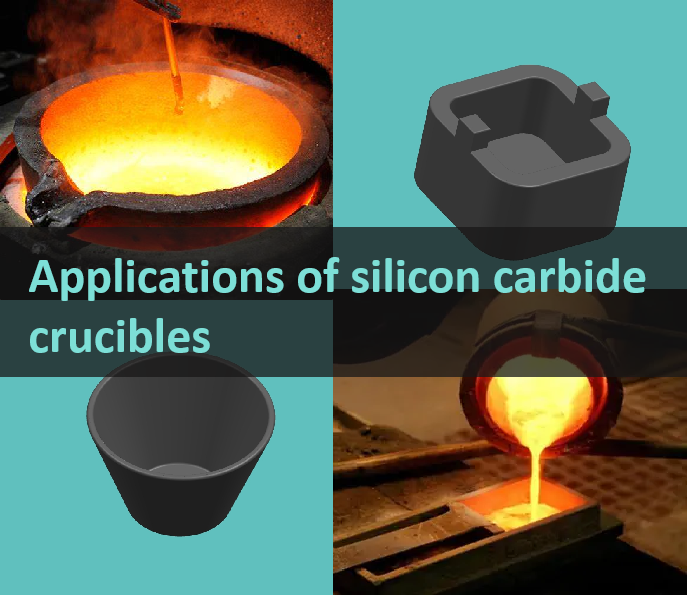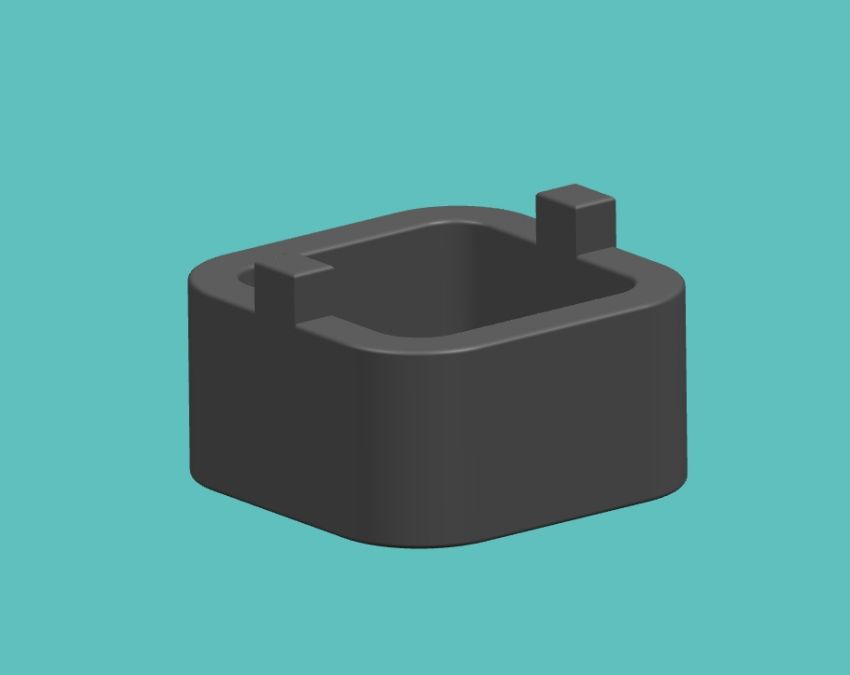
What is the crucible?
A crucible is a vessel or melting pot made of highly refractory materials such as clay, graphite, porcelain, etc. It serves as a refractory container and a holding vessel for industrial kilns and furnaces. It is primarily used for the evaporation, concentration, crystallization of solutions, and the burning of solid substances. Depending on the material, the most commonly used types of crucibles in the market include alumina (aluminum oxide) crucibles, zirconia crucibles, silicon carbide crucibles, quartz crucibles, graphite crucibles, and others.
Table of Contents
In which fields is the crucible used?
Silicon carbide crucibles have excellent thermal conductivity, high-temperature resistance, rapid heat transfer, high mechanical strength, oxidation resistance, thermal shock resistance, and high density. They also exhibit a low coefficient of thermal expansion during high-temperature use, making them somewhat resistant to thermal stress from rapid heating and cooling. Additionally, they possess excellent chemical stability. Silicon carbide crucibles are compatible with various types of furnaces, including coke furnaces, oil furnaces, gas furnaces, heating furnaces, and high-frequency induction furnaces, among others. These crucibles find primary application in the following fields:
▲In industrial kilns and furnaces, silicon carbide crucibles serve as containers for supporting and containing molten metals, alloys, or quenching media during processes like metal heat treatment, annealing, and quenching.
▲In the ceramics industry, silicon carbide crucibles are used in high-temperature sintering processes. These processes involve subjecting ceramic powders to high temperatures to bond them into solid ceramic products. Due to their ability to withstand high temperatures, silicon carbide crucibles can endure the high-temperature environment of sintering kilns, facilitating the preparation of ceramic materials.
▲In the semiconductor, optical, and materials science fields, silicon carbide crucibles can be employed as containers for crystal growth, enduring the melting and crystallization processes at high temperatures.
How are the performance of silicon carbide crucibles?
During the use of silicon carbide crucibles (crucible boxes), they are subjected to not only high temperatures exceeding the product sintering temperature but also various physical, chemical, and mechanical forces. These include loads on components at high temperatures, stress generated during operation, and thermal stress due to rapid temperature changes or uneven heating. Therefore, there are certain requirements for the performance of silicon carbide crucibles (crucible boxes):
▲High Refractoriness: Silicon carbide crucibles (crucible boxes) have the ability to withstand high temperatures without melting.
▲High-Temperature Structural Strength: Silicon carbide crucibles (crucible boxes) exhibit high resistance to mechanical loads at high temperatures. Crucible boxes at the bottom of a kiln, for example, must withstand the weight of all the crucibles above them. Insufficient structural strength at high temperatures can lead to crucible breakage and kiln accidents. Therefore, it is essential to ensure that crucible boxes have good structural strength to prevent damage and slagging.
▲High Thermal Stability: Silicon carbide crucibles (crucible boxes) are capable of withstanding rapid temperature changes without cracking or spalling. They are less susceptible to thermal expansion and contraction, preventing cracking and damage.
▲High-Temperature Volume Stability: Silicon carbide crucibles (crucible boxes) maintain stable volume at high temperatures without irreversible changes.
▲Thermal Conductivity: Silicon carbide crucibles (crucible boxes) have good thermal conductivity, rapidly distributing heat evenly both inside and outside.
▲Wear Resistance: The surface of silicon carbide crucibles has a high hardness, providing some degree of wear resistance, allowing them to maintain good appearance and performance over multiple uses.
▲Corrosion Resistance: Silicon carbide crucibles exhibit high resistance to many chemicals and corrosive gases.
Common Issues with Silicon Carbide Crucibles
Silicon carbide crucibles may encounter several common issues during their use, which can impact industrial production. Here are some common problems that can occur during the use of silicon carbide crucibles:
▲Sintering and Deformation: Silicon carbide crucibles may sinter and deform at high temperatures due to thermal expansion, leading to distortion or cracking.
▲Oxidation: While silicon carbide is generally stable in oxidative environments at high temperatures, oxidation reactions may still occur under specific conditions, resulting in the formation of oxide layers on the crucible’s surface, which can affect production.
▲Corrosion: In certain special environments, crucibles may be subject to corrosion by chemical substances, potentially causing damage or material contamination.
Sample Adhesion: During melting or high-temperature reactions, samples may adhere to the surface of the silicon carbide crucible, making cleaning difficult.
▲Thermal Shock Cracking: Sudden temperature changes or rapid cooling at high temperatures can lead to thermal shock cracking, causing the crucible to fracture.
To minimize these issues, it’s important to choose the appropriate crucible type and material, avoid abrupt temperature changes, and regularly inspect the crucible’s condition.
Precautions for Using Silicon Carbide Crucibles (Crucible Boxes)
Silicon carbide crucibles may encounter several common issues during their use, which can impact industrial production. Here are some common problems that can occur during the use of silicon carbide crucibles:
▲Avoid Overfilling: Do not overfill the crucible with molten material, as this can lead to spillage and potential crucible damage due to thermal expansion. Load materials according to the crucible’s capacity.
▲Prevent Rapid Temperature Changes: Try to avoid abrupt temperature changes, as they may cause the crucible to crack.
▲Preheating and Cooling: Silicon carbide crucibles can absorb moisture, so it’s important to preheat them according to the manufacturer’s guidelines to remove any residual moisture from the crucible walls. Gradually raise the temperature to the operating level to avoid thermal shock cracking. Similarly, during cooling, gradual cooling should be employed to prevent sudden temperature changes.
▲Consider the Crucible’s Lifespan: The lifespan of a crucible depends on its application. Avoid directing strong oxidizing flames directly onto the crucible, as this can shorten its lifespan.
▲Prevent Mechanical Impact: Silicon carbide crucibles are brittle and can be damaged by mechanical impacts. Avoid collisions or drops during handling and operation.
▲Avoid Overloading: Do not use the crucible to carry objects that are too heavy, as this can lead to cracking or deformation.
▲Regular Inspection: After use, regularly inspect the condition of the crucible, especially for signs of sintering, cracking, or other issues.
▲Moisture Prevention: Crucibles should be protected from moisture, as moisture can significantly affect their quality. Using a moist crucible can result in cracking, fragmenting, and loss of molten metal. Therefore, it’s crucial to take precautions against moisture during storage and use.



